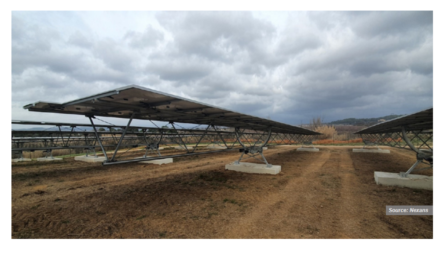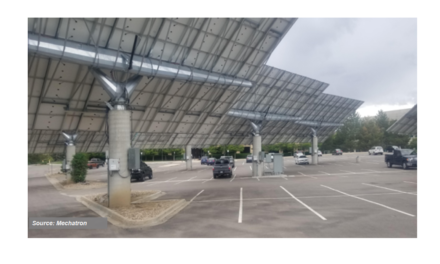- Majority of trackers companies are offering solar trackers that are compatible with bifacial technology and role of trackers in agrivoltaics is becoming popular these days
- Making use of artificial intelligence in controlling solar trackers, especially to calculate the optimal tilt angle for various weather conditions and terrains
- Another interesting development is all-terrain trackers, which are designed for rolling terrains
After we looked into the shares of the leading stakeholders in the previous article of our Solar Tracker series, we now take a glimpse on technology to these solar mounting systems (see Market Shares of Solar Trackers Suppliers). Trackers are increasingly becoming the mounting technology of choice in the large utility segment of PV, which is not only the largest global application segment for PV but is also cost conscious. With trackers being the legs of a PV system, their reliability in extreme weather conditions is another top requisite. In addition, these devices come with the promise of higher power yields compared to the low-cost fixed mounting systems.
Tracker suppliers have been working on innovative concepts and product platforms to meet all these criteria. The top of the list is obviously bifacial. Bifacial is becoming a key ingredient in the PV technology mix. And bifacial is not just limited to PERC; every advanced technology today is bifacial, and the higher-efficient cell varieties have all higher bifacalities than PERC. Bifacial costs these days are either the same or very competitive to monofacial at the very least. And combining bifacial with trackers leads to synergistic efficiencies, i.e., 1+1 is more than 2. Thus, bifacial is the top priority for tracker manufacturers. Avoiding torque-tube shading is the basic design aspect, and several such designs have been developed to meet this criterion. 2P configurations are also gaining more popularity on this account. Also, some smart tracking methods and algorithms are being offered by companies that favor bifacial gains in various lighting scenarios.
Nearly every tracker manufacturer is offering designs that are compatible with bifacial. Lubaba Mawas, Project Engineer at Nextracker, presented the enhancing features of trackers that best support bifacial modules at the TaiyangNews Bifacial & Solar Trackers Conference 2022 (access presentation here). These are: high rise rail that provides a 9 mm space between torque tube and panels, 125 mm round torque tube and elevate the panels facilitated by the mechanically-balanced system design. The gap above the pier and the bearing housings and around the drive also allows more reflective light to reach the rear of the panels (see All-Terrain Tracker From Nextracker).
Companies are also working on building in value-add functions into trackers. The ability to control each tracker row independently by means of a software is an interesting one that eliminates row-to-row shading due to several factors such as geographical conditions, terrain and weather. And as it pertains to the terrain, an interesting development is all-terrain trackers, which are designed for rolling terrains. These trackers simply follow the contours of the ground, hence ‘roll with the terrain’. The benefits are several: it does not require land grading or flattening, leading to savings on both project costs and time. The technology is not only applicable to small variations in terrains, but also slopy terrains which were previously considered not feasible for PV plant installations. This approach also helps save on land costs by avoiding the premium commanded for flat lands.
The application of artificial intelligence (AI) in solar tracker control is a very interesting approach. With AI, trackers are able to calculate the optimal tilt angle for various weather conditions and terrains. It is thus a very important subject for tracker makers with a few already offering such high-end solutions.
Trackers have been also made compatible with the very large modules that have taken over the market – and the resulting high wind loads. Further, trackers are also finding new applications such as agrovoltaics and for mitigating noon-peaks in power generation.
The innovations and recent developments in the trackers area was also one of the themes for TaiyangNews Virtual Conference On Bifacial & Solar Trackers.
The text is an excerpt from TaiyangNews 2nd Market Survey on Solar Trackers, which was published in Dec. 2022 and can be downloaded for free here.













